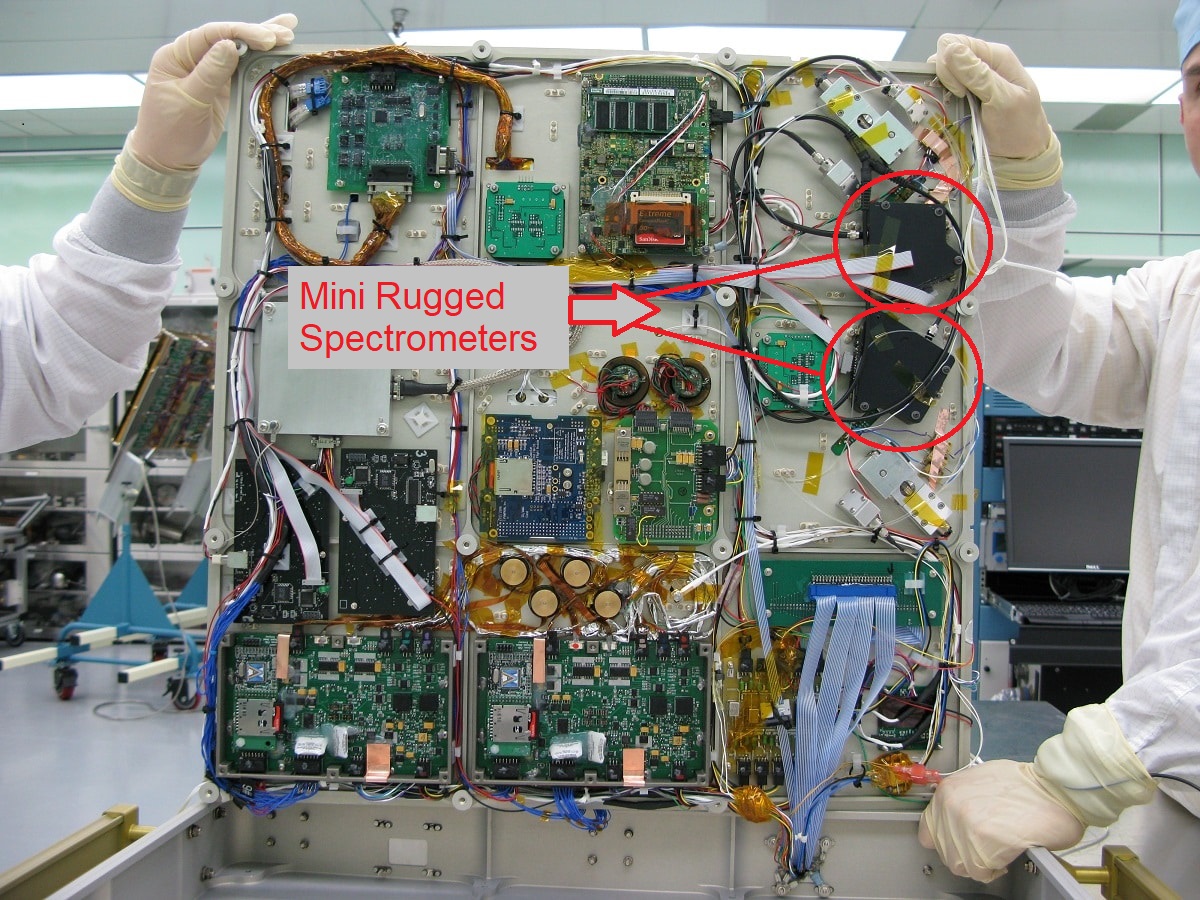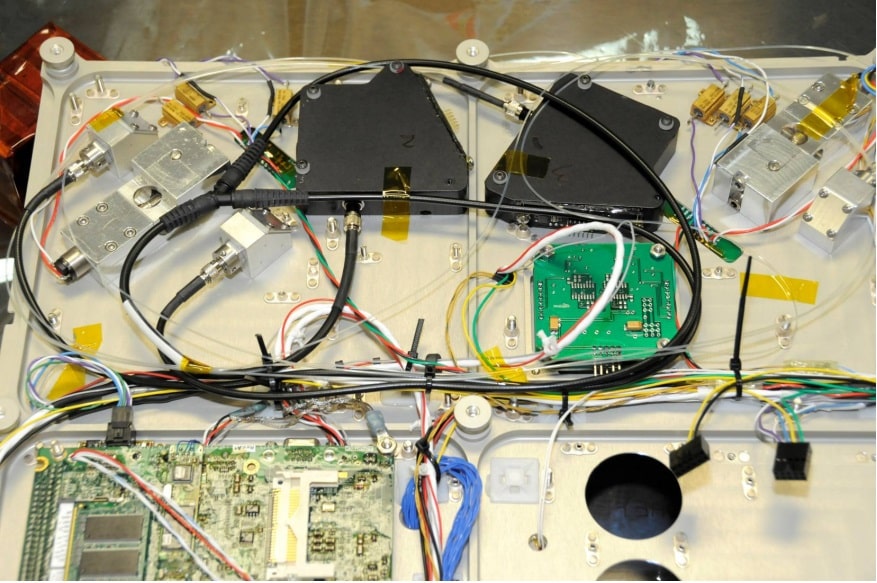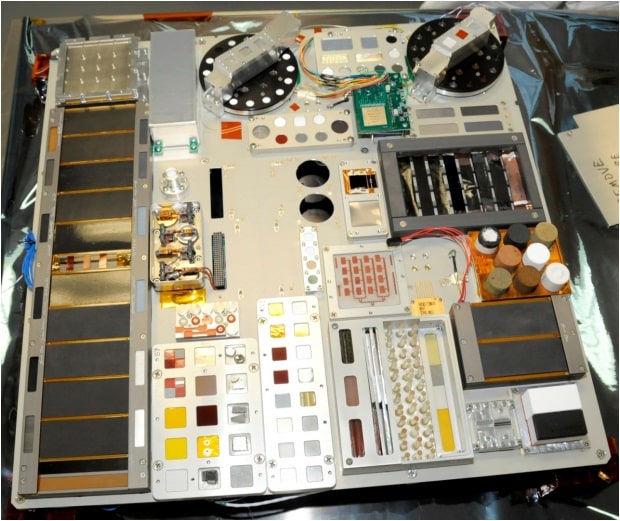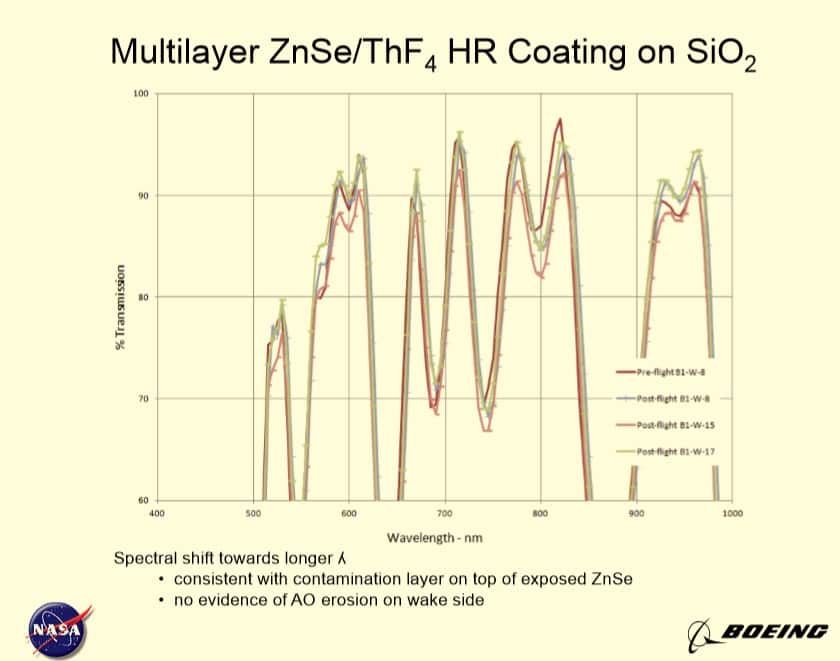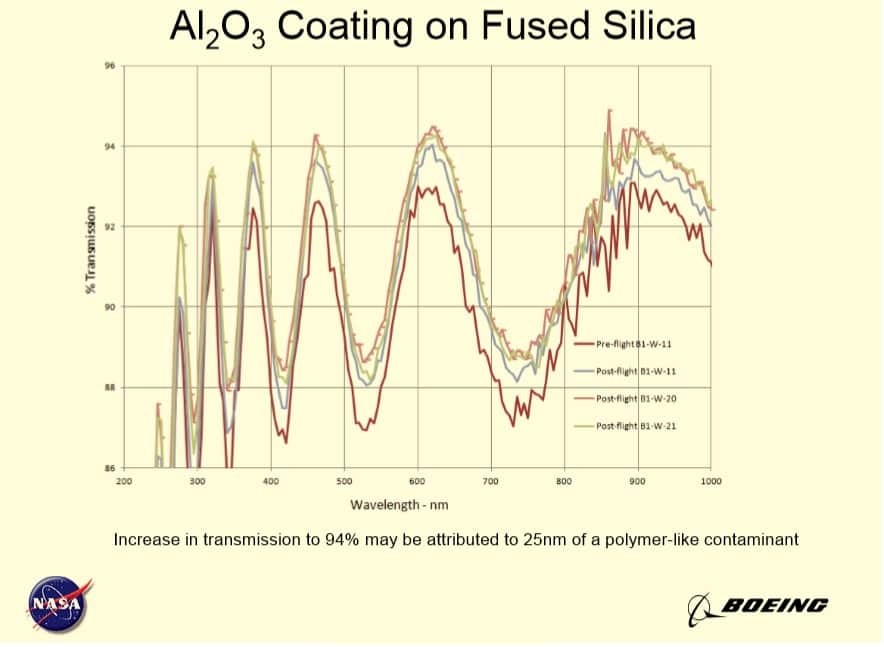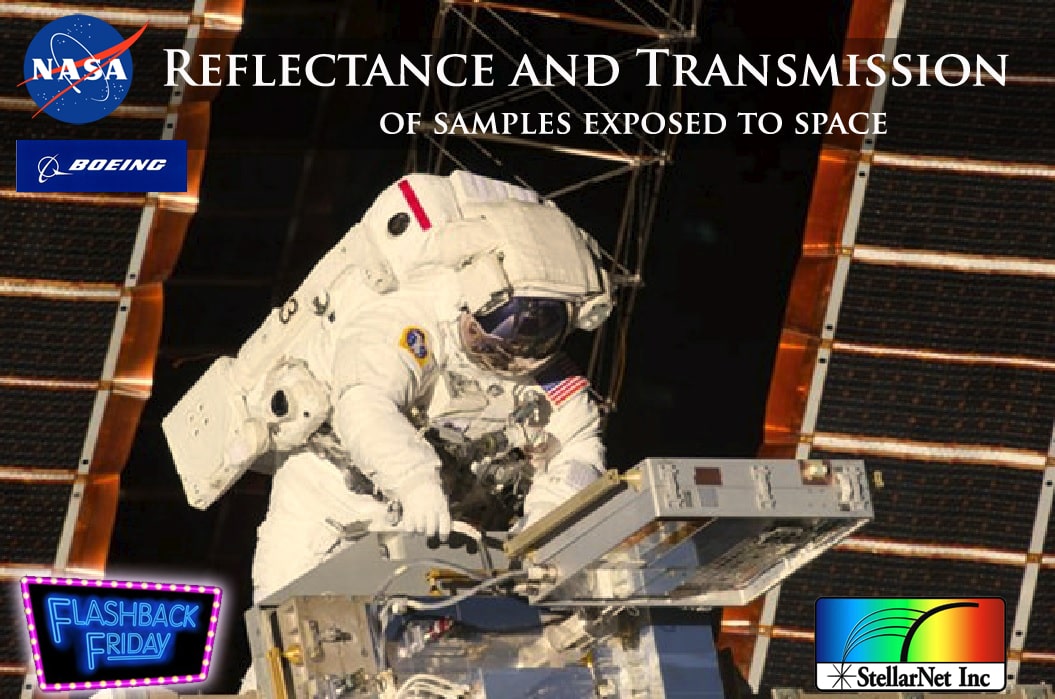
What do we mean by ruggedness and reliability when we talk about StellarNet spectrometers? One example in this weeks “Flashback Friday” is when StellarNet spectrometers were chosen to be part of the MISSE (Materials International Space Station Experiment), a joint project between Nasa and Boeing back in 2009!
Our BLUE-Wave spectrometers were launched into space and mounted on the ISS as part of the MISSE-7 experiment, designed to take real-time spectra to provide insight on how the environment of space affects different optical properties of materials. Many of the materials were designed for space exposure and are considered next generation materials for space travel. Three spectrometers were mounted into the mission’s tray-like Passive Experiment Container (PEC) along with LED light sources and a moving carousel to switch between materials under test. Samples were 0.5” diameter 0.001” to 0.125” thick; below are a few examples-
- bare fused silica
- magnesium fluoride
- AR coatings on fused Silica
- Al2O3 on fused Silica, ZrO2
- SiO2 on ZrO2
- ZnSe/ThF4 high reflector
- AZ Technology White
- AZ Technology Black
- numerous other customer samples
The PECs were positioned in ram/wake or zenith/nadir orientations providing different environmental exposures.
Nasa’s reporting concluded StellarNet spectrometers were a significant step forward in:
– Miniaturization
– Low power consumption
– Speed
– Data reproducibility
After recovery of the PEC in May of 2011 (nearly 1.5 years in space!), all spectrometer components and optical samples were in excellent condition. However, the samples did appear to have a polymer-like contaminant layer. Interstellar ectoplasm?
Space exposure to the uncoated fused silica samples showed decreased transmission into the UV, typical of contamination. Al2O3 coated samples showed increases in transmission to 94%, possibly attributed to 25nm of the polymer-like contaminant. Anti-reflective coatings on SiO2 show spectral shift of maximum transmission beyond 600nm consistent with 25-35nm of contaminant.
The moving carousels designed to place individual samples unfortunately malfunctioned, limiting sample testing. StellarNet spectrometers, however, are designed with no moving parts and are “shock-proof” lasting through the toughest conditions.
Reliability is important when you are considering taking a spectrometer to space or purchasing for your university chemistry or physics teaching labs. Vibration during rocket launch or when an undergraduate student knocks it off a lab bench could easily ruin your day. StellarNet’s spectrometers are rugged and can be knocked around without any harm to the optical bench or electronics. You might see our Application Scientists playing catch with spectrometers at trade shows throughout the year – just a fun way to show the durability of the instruments in case they drop.
All of the spectrometers at StellarNet are modular – meaning that it is easy to customize the instrumentation for your specific experiment.
Thanks for checking out today’s #Flashback Friday! Follow us on social media for updates.

